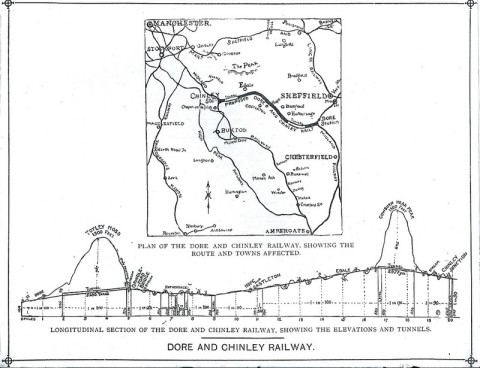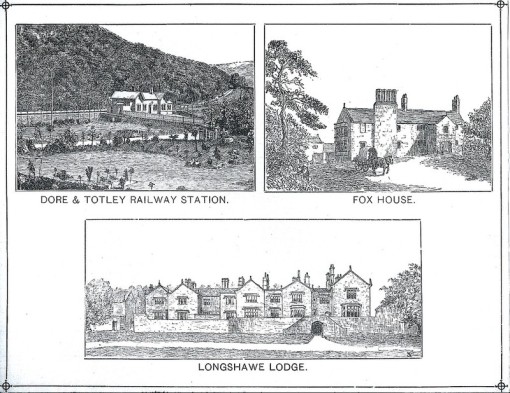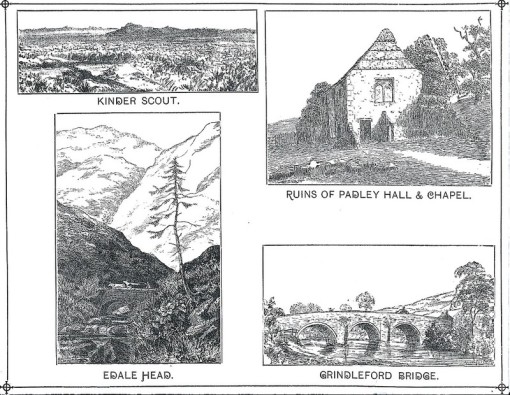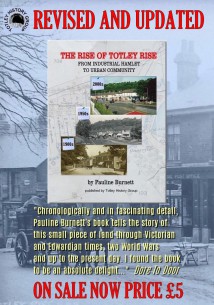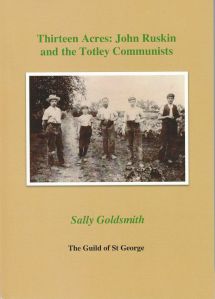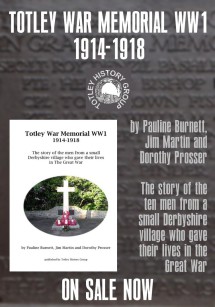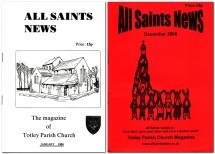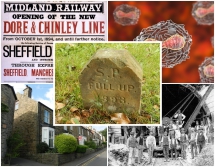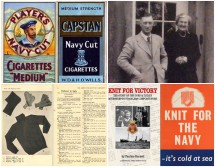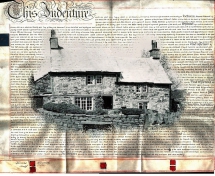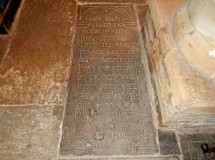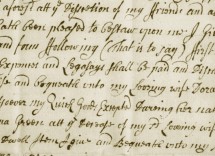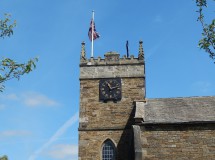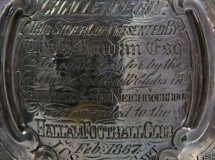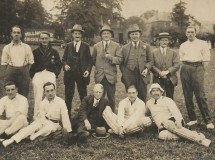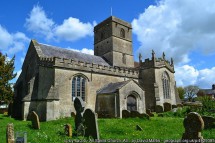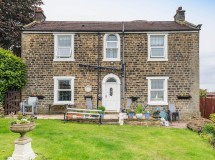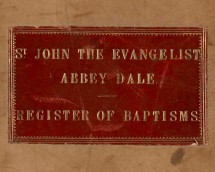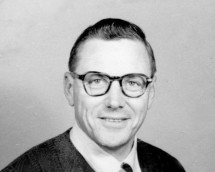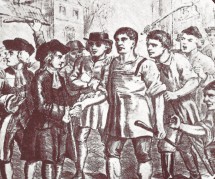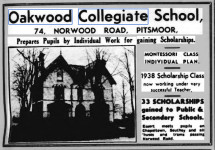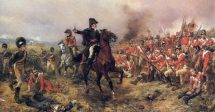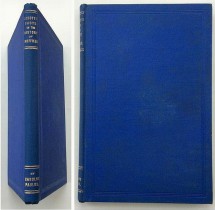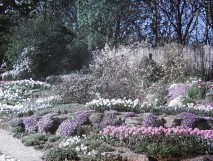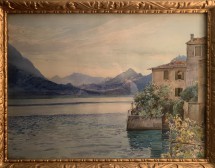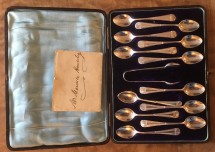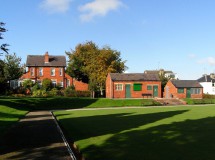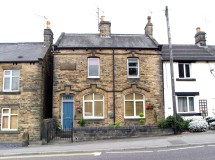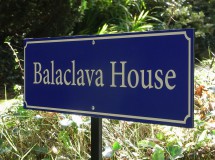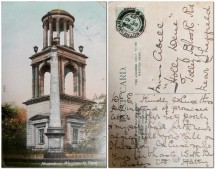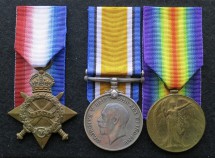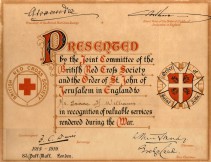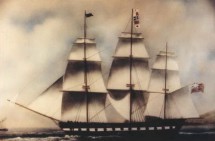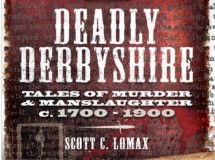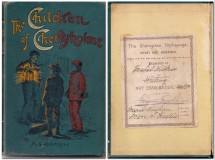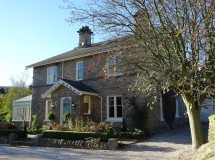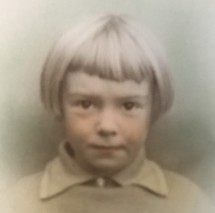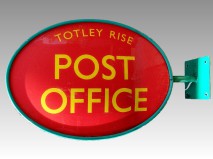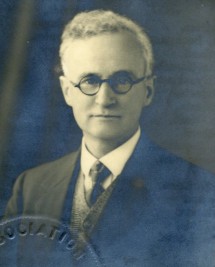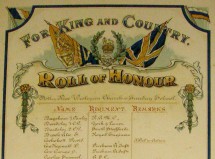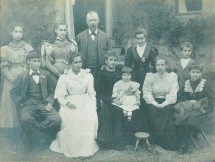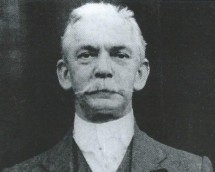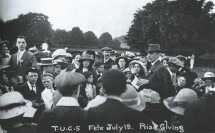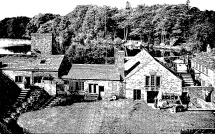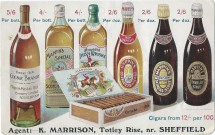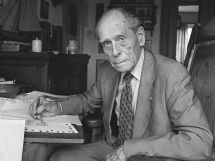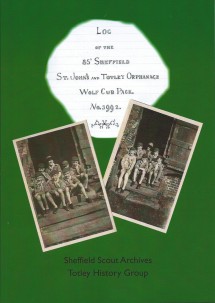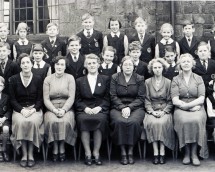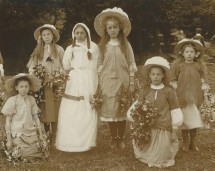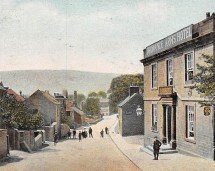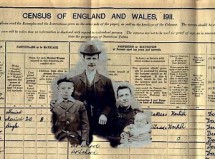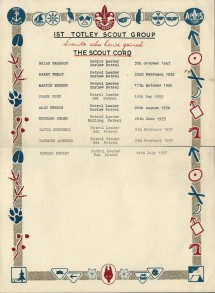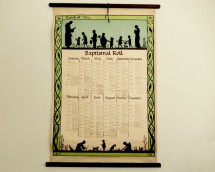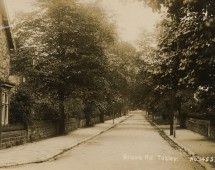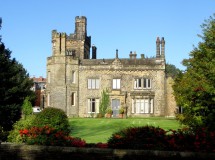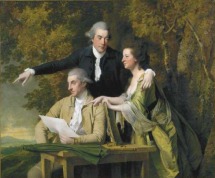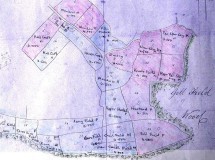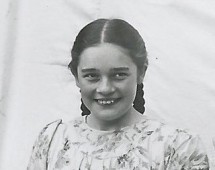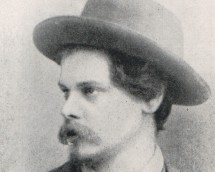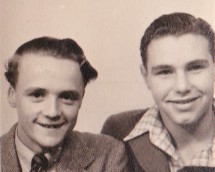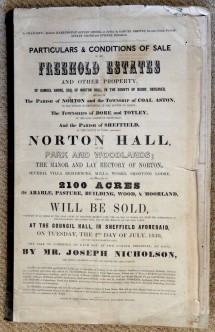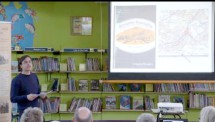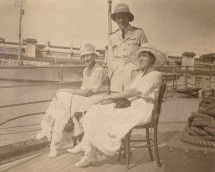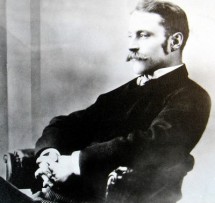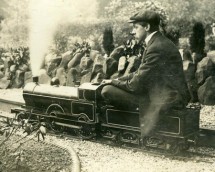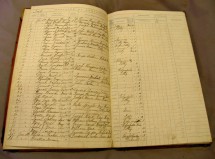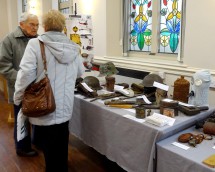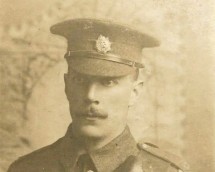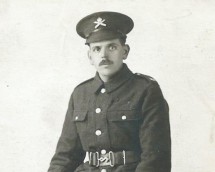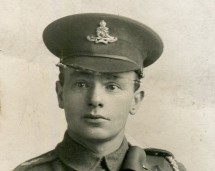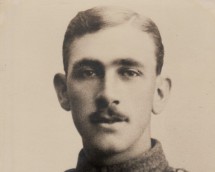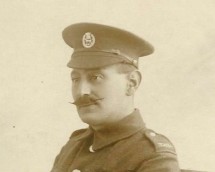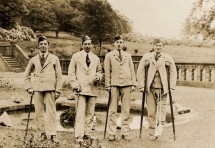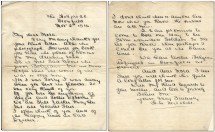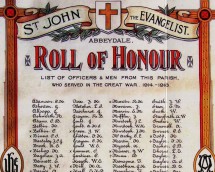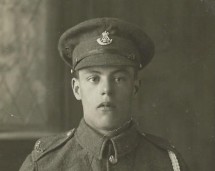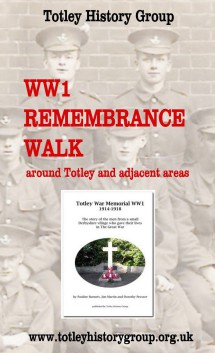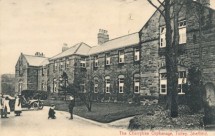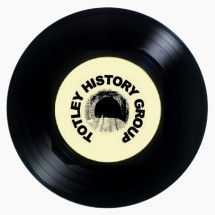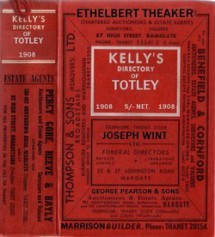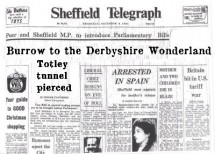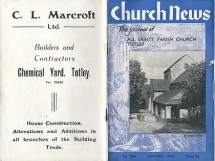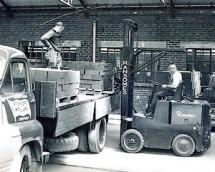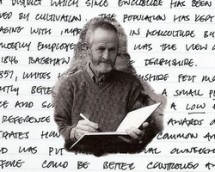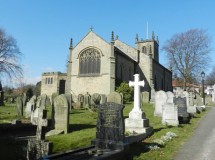Views Upon the Dore and Chinley Railway
By Edward Bradbury (aka Strephon)
The Sheffield Weekly Telegraph, Saturday 2 August 1884.
"Let the country make the railroads, and the railroads wilt make the country". This antithetical aphorism came from the lips of the hard-headed Darlington Quaker, Edward Pease, the colleague of George Stephenson. It could not apply to any place with more practical cogency than it does to Derby borough and shire. Derbyshire was one of the earliest, as it is one of the latest districts to feel the influence and impetus of railways. The Midland Counties, the North Midland, and the Birmingham and Derby, were among the pioneer railways of England. Derby was one of the foremost towns to feel the throb of the new civilisation. It became, almost unconsciously, the heart of the novel pulsation, and Derby without the Midland Railway would be as undefinable as Derby in the days of the Danes. The latest railway enterprise is the Dore and Chinley Line, started by Sheffield capital and Sheffield energy, and supported by the progressive spirit of the Midland Railway Company. The inception of the Midland met with more aggravated opposition than that accorded to the new iron highway to the Peak. In 1835, when the Birmingham and Derby line was projected, the support of the "inhabitants of Derby" was invited to encourage the scheme. Three persons out of the entire population thought fit to attend the meeting, so excited was Derby over a matter which has since turned a drowsy village into a busy town. An urgent "whip" lashed twelve inhabitants together, before whom the railway advocates read their brief, and unfolded their plans. Derby to-day is the largest railway centre in Christendom. The town owes more to the locomotive than to any other productive industry of the past or the present. In 1884, a new railway route, connecting Sheffield with Manchester, opening out to labour and capital undeveloped and almost undiscovered district, and giving to the leading line of the United Kingdom an alternative track from south, west, east, and north, to Lancashire, is projected. At once Mr Ruskin raises his holy hands in horror against the defacement of divine scenery, landowners simulate a suspicion as sensitive as their fathers evinced in Stephenson's days, and landscape lovers quote Wordsworth in hysterical fright. No opposition to a new railway has been evinced, in recent years, so hostile in spirit as that extended to the Dare and Chinley Railway. But the Bill has passed the scathing Select Committee of the House of Commons, and soon Bradshaw will add to the bewildering list of its stations Grindleford, Hathersage, Bamford, Hope and Edale.
The iron horse has not "shied" at the Derbyshire Peak. One of the earliest construction lines in the country was the High Peak Railway, which is carried over the exposed tableland from the Cromford Canal, at Whatstandwell, to the Peak Forest Canal at Whaley Bridge, by sensational gradients and contorted curves. A capital of nearly a quarter of a million sterling was embarked in this enterprise. It did not prove remunerative to its promoters, and the line passed, by lease, to the London and North-Western Company in perpetuity. The mention of the London and North-Western calls for the remark that Derbyshire is served by four other companies - the Midland, and Great Northern, the Manchester, Sheffield and Lincolnshire, and the North Staffordshire. The High Peak Railway does not convey passengers, but the London and North-Western, of course, runs passenger trains in the Peak, especially on its Buxton and Manchester section. The Midland mainline left the Peak country to the east, at Ambergate, when the Derby and Leeds line was constructed by the elder Stephenson. It halted at the threshold of the Derbyshire dales for ten years. Then it felt its way, through cutting and tunnel, by Matlock, as far as Rowsley. This important extension was opened to the public in the summer of 1849. Here the iron horse was "pulled up". At Rowsley the line paused for a long time. Ducal influence was opposed to the railway running along the open valley. This hostility was overcome by the permanent way being taken under Haddon Hall hill. Soon a highway to Buxton and Manchester followed. Mr Ruskin was as incensed over the Buxton extension as he is over the Dore and Chinley Bill. He wrote in Fors Clavigeria:- "That valley where you might expect to catch the sight of Pan, Apollo, and the Muses, is now desecrated, in order that a Buxton fool may be able to find himself in Bakewell at the end of twelve minutes, and vice versa."
After this the iron horse pulled up dead. He had certainly accomplished heroic achievements. But there was one obstacle he would not face. He would not take the range of hills separating Hallamshire from the Derwent Valley. Froggatt Edge frightened him. Millstone Edge "took the steam out of him". He preferred to take the journey from Sheffield to Buxton in circumbendibus by way of Chesterfield and Ambergate. The coachman applied the whip in 1872, when the Hassop and Dare Line was projected by the Midland Company. But the iron horse objected to travelling two-thirds of the distance underground, grew giddy at the thought of the brain-reeling viaducts and jibbed at the tortuous curves. He asked for a better road. The result is that the roundabout route will shortly be remedied by the Dore and Chinley Railway, which is one of the largest undertakings of a similar nature since the Settle and Carlisle Line pierced the mountain moorlands of the Pennine Chain. There is not room left in limited England to make another Settle and Carlisle Railway, which is 72 miles in length, whereas the Dore and Chinley Line will be only about 20 miles.
There is much to be said in favour of the Dore and Chinley Line. There is something to be urged against it. It is for the unprejudiced to determine in its favour, or otherwise. The Select Committee of the House of Commons have heard the pros and cons, the whyfors and wherefors of the argument, and they have decided on an endorsement of the scheme of the promoters of the projected railway. Probably their decision will receive popular sanction. The Dore and Chinley Line will stimulate in a decaying district among the decreasing population. It will open out the neglected mineral resources of a hitherto isolated neighbourhood. It will offer excellent inter-communication to a people absolutely remote from travelling facilities. It will abolish that Satanic usurper of the highway, the tyrannical traction-engine. It will give a new through route across a healthful tourist district at the present moment inaccessible save to the sturdy pedestrian,or to the passenger on the weather-exposed coach, crossing moorland ranges of mountainous height. It will raise to the surface that natural wealth of Derbyshire which lies underground. (In his British Worthies, Thomas Fuller speaks of North Derbyshire as "poor above and rich beneath the ground.") But the opponents of the scheme would negative all these advantages by telling us that the Dore and Chinley Line will carry a noisy and obnoxious civilisation among the virgin hills and the unsmirched valleys of "undiscovered Derbyshire", that unexplored region whose romance becomes a religion where the austere heights stand out lovely and lonely, as if they belonged to a new made world where man is unknown; where the river runs in radiant reaches in dusky depths of dingle and dell and dale tawny, amber or topaz in the sunlight (for it has come from the heart of the moors, and is coloured with the pigments that peat and heather and moss and bracken mix on Nature's palette); and glassy green where it reflects the hanging trees, where fern and foxglove, and wild flowers innumerable, mirror themselves in the liquid looking-glass; sometimes restful in shady and deep pools, where the rising trout or grayling make a sudden plunge, followed by widening rings in the reposing stream; always voiceful, whether it be the mere murmur and lullaby of the lapping water, or the tumultuous shout of the swift and eager rock-impeded current. The hills are eloquent in their silence; the Derwent is eloquent in its voiceful revelations; and which speaks most directly to the inmost heart of man - the solemn and eternal heights, or the sequestered and soliloquising stream - I know not. Both appeal to him who goes straight to Nature a willing and wishful pupil -
Knowing that Nature never did betray
The heart that loved her.
The iron path, with its steam and scream, its rattle and roar, will enter the uncontaminated Derwent Valley, one of the few unspoiled stretches of river scenery in Derbyshire. But when the utilitarian and the sentimental are weighed together, the selfish side of the argument must not be left out of the question. The spirit of personal exclusiveness has had as much to do with the hostility to the Dore and Chinley Railway as any other considerations, real or chimerical. Private landowners have been desirous of keeping a paradise, intended for all men, to themselves. Greedy man would enclose the great and generous ocean - if he could as private property. He succeeds pretty well in fencing round seas of undulating heather. In the Kinder Scout district has been established a society for the protection of roads and moors from the encroaching hands of the monopolists. It is called the Hayfield and Kinder Scout Ancient Footpaths Association, and if it carries out its professed aim, it will do the public practical good. Do you remember the lines:-
'Tis an offence in man or woman
To steal a goose from off a common;
But what can be that man's excuse
Who steals the common from the goose?
Wordsworth, when the railway to the Lake Country was projected, called upon "the mountains, vales, and floods" to "show the passion of a just disdain" against "that whistle", But selfishness surely had something to do with the remonstrative rage of the recluse of Rydal Mount. If the puling poet worshipped Nature so much himself, would he deny her magical influences to people shut up from year to year in the pathetic pain-world of the tainted and torturing town? Lord Houghton answers Wordsworth's objections admirably. He thus addresses him:-
And thou, the patriarch of these beauteous ways,
Canst never grudge that gloomy streets send out
The crowded sons of labour, care, and doubt,
To read these scenes by light of thine own lays.
If the engineering workshops the Dore and Chinley Line are on the same magnified scale as those on the Matlock and Buxton branch, or the Settle and Carlisle Railway, the lovers of the picturesque will not have much to grumble at, for the triumphs of scientific enterprise add, by their splendid viaducts and Winding and graceful curves, to the old wonders of Nature. At present the country which the Dore and Chinley Line will serve is monopolised entirely, in the matter of carriage, by those most monstrous abominations - traction engines. The railway in the Derwent Valley cannot surely be less aesthetic than these hideous abortions of misapplied mechanics. Writes a gentleman living in the Peak on this question of railways and romance- "Few men know North Derbyshire better than I do, none have revelled in its delights more than myself, and to no one are its beauties more sacred; but each time that the perennial cry of railway desecration is heard, few have a greater regret for the selfishness that lies at the root of it I have a summer cottage on a hill, overlooking a Derbyshire valley. Along the bottom runs the Midland main line; trains pass and repass every few minutes; the line is a tiny streak, the engine and carriages a toy; the whole a standing example of how puny are man's greatest mechanical triumphs, his Chief efforts at controlling Nature's forces, when measured by the ever-present, unchanging immensity of even a small area of the glorious natural beauties of our land. No; do not hinder railways affording facilities for opening up the country to the dwellers in the towns; speed them on. help to cheapen the fares, and we shall want no Kyrle Societies, no Sunday lectures, no Open Space Committees; all the influences they try to foster will be ready to our hand."
The Dore and Chinley Railway will be something like 20 miles in length. For four miles and a half it will burrow under the hills; the remainder of the distance it will be carried along the valleys. Considering the character of the country; the gradients are fairly good, and the curves not severe. The steepest incline will not be less than one in ninety, and the most acute curve not more than half a mile radius. The new line will leave the Midland main line from Chesterfield to Sheffield, at the Dore and Totley station. A run of two miles brings the iron horse to a hilly ridge he cannot ascend - the magnificent range of "Edges" from Kinder Scout in the northern extremity to Bamford, Derwent, Millstone, Stanage, Froggstt, and Curbar, to the southern end overlooking the wider vale of Chatsworth. So what he cannot get over he goes under. The Totley Moor will be perforated for a distance of three miles. When the iron horse emerges into the daylight, 10 and behold I picturesque Padley. with the Burbage Brook taking its living waters to the Derwent. There is no more romantic nook in Derbyshire, and it is in this wooded glen, where the beck is brawling under the trees, that the traveller will catch sight of the glad daylight again. The train will now wind by wood and water along the deep and devious Derwent valley, past glorious Grindleford Bridge, to Hathersage and Bamford. At Bamford, the Derwent is left to the east, and the valley of the Noe, fresh from Kinder Scout watershed, is invaded. The track is now through the pastoral vale of Hope, with its mountain surroundings, past Win Hill and Lose Hill, and by Edale Head and Edale Chapel, through the very heart of the wildest part of the Peak. Castleton is left a couple of miles to the south-east, and the second tunnel is entered at Cowburn, where nearly two miles of millstone grit will have to be cut through. When this blasting is accomplished, a brief burst down the short valley of the Chinley brings the train to a junction with the Midland main line at Chinley, where the Pullman cars are flying on up and down tracks (as the Americans say) between Liverpool, Manchester and London. There will be stations at Grindleford, on the west end of the Dore tunnel at Hathersage, at Hope, and at Edale. These are names which are to some of my readers but mere geographical expressions. Let us visit some of the scenes with which the new line will be identified.
Dore and Totley station, on the Midland line from Chesterfield, is sufficiently familiar to the travelling community to need no particular mention here. When the Chinley Line is made (and it has received the assent of both Houses of Parliament), Dore will become a junction, and the eastern terminus of the new line. Taking our seats in an imaginary train over the line, we run through Pointon Wood, and presently enter the first tunnel (5,280 yards long), burrowing under the barrier of moorland "edges" that spread from Kinder Scout to Chatsworth. Fox House is over the tunnel to the east side, as is Longshaw Lodge, the shooting box of the Duke of Rutland. This district may be denominated the Derbyshire "Dukeries". Here the estates of their Graces of Devonshire, Rutland, and Norfolk, may be said to join. You might shoot at a grouse over the ground of one duke, for it to fly over land the property of another duke, and for it to drop dead on the estate of a third duke.
The line emerges from the tunnel just at the poetical point where the singing streamlet, called the Burbage Brook, runs away from its moorland home into the Derwent. On its journey from the mountains it has passed the sublime rocky platform called Hu-Gaer ('In the city of God") and the old British fort of Caelswork (which means the fort or building of the churl; Anglo-Saxon "carl"). This, perhaps, is the most picturesque point of the new railway route. The brook enters the river and the sylvan surroundings of Padley Wood. Here the Burbage valley and the Derwent valley meet in a leafy solitude of almost ideal landscape. Close by are the historic ruins of Padley Chapel with its associations of the persecutions of Roman Catholics in Elizabeth's reign. The chapter is not a nice one to read. The Rev. John Charles Cox has told it with force and effect.
Continuing my outlined sketch of the Dore and Chinley Railway, we have emerged from the first and longest tunnel. The line now follows the course of the Derwent valley, keeping to the eastern side of the river. The first station from Dore is at Grindleford Bridge. From our imaginary carriage we see "Sir William" breaking with his burly shoulders the sky line to the west, with Stoney Middleton opening out its limestone pass, and classic Eyam scattered in isolated grey cottages over the barren hill sides. Hathersage is the next station. The church on the hill, surrounded by more towering heights, is old and interesting, and the burial place of "Little John" may be regarded as authentic. A short walk brings the lover of quaint architecture to North Lees Hall, once the manor house of the Eyre family, and now the property of Mr. G. H. Cammell, of Sheffield. Brookfield Manor, close by, is the romantically situated residence of that gentleman. North Lees is an isolated Elizabethan mansion, surrounded by the hills. The mouldings of the ceiling are of excellent character. Round the walls run Latin inscriptions. A staircase from basement to roof is a feature of the old house. It is spiral in shape, and the stairs, which consist of solid pieces of oak, run round a massive newel from top to bottom. The view from the flat, lead-covered roof of the tower, is a revelation in scenery too comprehensive to be epitomised in this volume - hill, water, wood, cottage and hall, pastoral slope, moorland expanse, deep valley, and serrated peak- these are items in the picture the landscape painter must fill in.
Shortly after Hathersage is passed, we leave the Derwent to the north-east at Mytham Bridge, where the tributary river Noe joins the parent stream. The Noe gives a healthful account of itself, for its face is tanned with moss and heather, and the trout are jumping gleefully. Here will be the third station. Bamford - a capital starting point for a tramp to Ashopton and the beautiful country called "The Woodlands". Now we pursue the Noe Valley to Hope, the fourth station on the line. It leaves Castleton about two miles to the south-west. The picture the carriage window frames is the massive grassy slopes of Win Hill and Lose Hill, guarding the line to the right, and Mam Tor and the lesser hills bulking in varied shape, with their outlying valleys picturesque patches of pasturage, to the left. There is no vale in Derbyshire more beautiful than the Vale of Hope. There are others more romantic, more rugged, more grand, but for sweet, pastoral beauty, with mountain surroundings, it is the most engaging of those Derbyshire dales of which Eliza Cook has sung. It is the benediction that follows after prayer, to adopt Longfellow's beautiful line. Hope will be the station for Castleton - a name which prompts pages. I recall the Peak Castle of Sir Walter Scott's Peveril, the Great Peak Cavern, the Speedwell Mine, Blue John, and the Odin mines. But here, again, is the place for a long summer day, and how can I compress the history and interest of Castleton into a brief note?
The climax of the scenery is reached at Edale. It is the fifth station on the line. The railway winds by Edale End, down Edale Dale itself, past Edale Chapel and Edale Head. Of Edale Head, permit a less enthusiastic authority than myself to speak. Mr Louis J. Jennings, in his Rambles Among the Hills in the Peak of Derbyshire, has nothing whatever to say in favour of Buxton, Matlock, or even Dovedale. His book is, generally speaking, a delicate defamation of Derbyshire. But Mr Jennings is constrained to say of Edale, "It is almost impossible to do justice to the view which charms the eye. It may be doubted whether there is anything finer to be seen in England, for it includes almost everything which goes to form magnificent scenery, except water. To the north, the lovely valley of Edale lies spread below, guarded by a range of hills at each end. On the other side is the equally fine valley of Hope, with heather-covered hills stretching away for many miles. These hills are. not, as we all know, as high as the mountains of Switzerland, but they are beautiful in form and appearance, and present a very noble, and even grand appearance. Fresh from a visit to Switzerland, it seemed to me that I had seen nothing more beautiful and attractive."
On goes the train, with the moss-coloured Noe playing hide-and-seek with the railway. Presently there is a sharp scream from the engine. We are in the darkness of the second and last tunnel of the line. It is 2,977 yards in length, and passes under the Mam Tor range of dark and bare gritstone hills. Two miles more brings us to the terminus at Chinley, which is on the Midland main line to Manchester, between Chapel-en-le-Frith and New Mills. The journey has been one of twenty miles. Are there twenty more such picturesque miles left in "merrie England"?
You can look at full-screen enlargements of the illustrations by following this link to our photo gallery: Tunnels and Trains.
You may also like to visit Pynot Publishing to read a short biography of the author, Edward Bradbury. You will also find on offer a collection of his writings in Midland Railway Sketches including Through The Peak On The Engine Of The Express.
Search Our Website Here
September
October
November
Unless stated otherwise our meetings are held in Totley Library on the 4th Wednesday of each month at 7.30pm.
Pauline Burnett's book The Rise of Totley Rise has been revised and updated. It tells the story of this small piece of land from 1875 when there was only a rolling mill and chemical yard alongside the river a mile from Totley, through Victorian and Edwardian times, two world wars and up to the present day. It has 94 pages including a useful index and many illustrations from private collections. The book is available now from Totley Rise Post Office priced at £5, or through our website when an additional charge will be made to cover packing and postage.
A few copies are still available of Sally Goldsmith's book Thirteen Acres: John Ruskin and the Totley Communists. Totley was the site of a utopian scheme funded by art critic and social reformer John Ruskin. In 1877 he bought 13-acre St. George’s Farm so that nine Sheffield working men and their families could work the land and, to keep themselves busy, make boots and shoes. Sally tells an engaging story from our history with a quirky cast of characters including Ruskin himself, the poet and gay rights activist Edward Carpenter and Henry Swan, a cycling, vegetarian artist and Quaker. The book is available to order online from the The Guild of St. George by following this link.
A recently discovered box of WWII correspondence reveals the story of how a small group of ladies from Dore and Totley recruited knitters from the west of Sheffield and how their efforts made them the country's greatest provider of Comforts for the Minesweeping crews of the Royal Navy. The story is told in Knit For Victory, a new book from Totley History Group. Written by Pauline Burnett, it has 82 pages and many illustrations. It is on sale in local shops and via our website. Further information about the correspondence is in this inside page of our website: Dore & Totley Minesweeping Trawlers Comforts Fund.
The story is told in Totley War Memorial WW1 of the ten men from our village who gave their lives in the Great War. Written by Pauline Burnett, Jim Martin and Dorothy Prosser, a chapter is devoted to each of the soldiers with a family tree followed by as much information as could be discovered about the men and their families. There is also information about their military careers and the actions in which they lost their lives. The book has 64 pages and is illustrated throughout with photographs of the men, their families and the houses where they lived.
Totley All Saints' Church Parish Magazines for the years 1985-2006 with notices of baptisms, marriages and funerals and accounts of spiritual, educational, charitable and social matters in the village. Scanned in full, including advertisements from local traders.
In 1893 during the building of the Totley Tunnel there was an outbreak of smallpox amongst the navvies which spread to some of the local population. 17 people were buried in communal graves in Dore Churchyard, 6 from "Green Oak" (Lemont Road). The severity of the outbreak was principally caused by overcrowding and insanitary conditions in lodging houses .
Kathleen Grayson was a 39 year old housewife when WW2 broke out. She volunteered for the ARP and became an ambulance driver. During an air raid on Sheffield in July 1941, and despite her own injuries, she managed to get a seriously injured casualty to hospital. For this she was awarded a commendation from King George VI. Together with her friend Hilda Duffy, Kathleen also assembled a team of knitters to provide essential warm clothing for the men serving on the minesweepers patrolling the North Sea.
We have recently bought at auction the WW2 memorabilia of Douglas Platts whose family home was at Hillside, 98 Queen Victoria Road. After the war Douglas returned to his civilian occupation working in the family scissors manufacturing business. He lived in our area for the rest of his life.
We are very grateful to Mrs Valerie Taylor of Dore for lending us the title deeds to Lower Bents Farmhouse which is reputed to be the oldest surviving building in the area with a proven history back to 1621. We have now scanned and transcribed the deeds which could be particularly interesting to anyone with a connection to the local Fisher, Dalton and Marshall Families.
Until 1844, when Dore Christ Church parish was created, Totley township was part of Dronfield parish. We have now transcribed the burial records for former Totley residents at St. John the Baptist, Dronfield for the period 1678-1870 and at St. Swithin, Holmesfield for the period 1766-1901.
Whilst researching the history of the Dalton Family we found it useful to transcribe a number of early Wills and Inventories. These and those of many other Totley, Dore and Holmesfield people dating from between 1594 and 1856 have now been added to our website.
St. Swithin's Church, Holmesfield pre-dates Dore Christ Church and was the place where many of the people from Totley worshipped and were baptised, married and buried. Read the inscriptions on more than 750 gravestones in the churchyard including those of Mr. and Mrs. William Aldam Milner of Totley Hall, Jessie Matilda Tyzack (nee Fisher) of Avenue Farm, and Rev. J. A. Kerfoot of St. John's, Abbeydale.
Thomas Youdan was a music hall proprietor and benefactor who was living at Grove House, Totley in 1867 when he sponsored the first football knockout competition in the world for The Youdan Cup.
The words Millhouses Cricket Club can be seen in the background of team photos which are likely to date from between 1905 and the early 1920s, very probably pre-war. They were lent to us by Garth Inman who can identify his great uncle, Cecil Inman, in some of the photos and would like to know when they were taken and, if possible, the names of others present. Please take a look to see whether you can put names to any of the faces.
Josiah Hibberd was seriously injured whilst working on the construction of the Totley Tunnel in 1892. He died on 9 May 1897 at the age of 38 having apparently spent most of previous five years in hospital.
Bradway House was built around 1832 by Henry Greaves, a farmer, together with two adjacent cottages. We have traced most of the occupants of the property from these early days up to the start of World War Two.
We have transcribed the baptisms records at St. John the Evangelist, Abbeydale from when the church was consecrated in 1876 until just after the start of World War 1. The records are arranged in alphabetical order based upon the child's name and show the date of baptism, the names of the parents, their home location and occupation.
Nick Kuhn bought an original 1920s poster which had this owners' blind stamp in one corner. The stamp almost certainly refers to a house named Wigmore that was built in the late 1920s or early 1930s. The first occupiers that we can trace are John Howarth Caine, a district mineral agent for the LNER, his wife Florence Jane (nee Prince) and daughter Doris Mary. The Caine family lived at Wigmore until 1936 by which time the house would have been known simply as 12 The Quandrant.
George Griffiths died on 13 December 1888 following an explosion during the sinking of number 3 airshaft at Totley Bents. His widow Florence died shortly afterwards and his two daughters Maud and Annie were adopted separately. Whilst Annie lived the rest of her life in Yorkshire, Maud emigrated to Australia in 1923 with her husband, John Burrows, daughter Margaret and son Jack, pictured above.
George Wainwright was said to have been born in Bamford, Derbyshire in 1714. He learned the trade of linen weaving and moved to Totley after his marriage on 1744. He became an ardent follower of John Wesley who paid many visits to Sheffield and who would have passed through or close to Totley. Preaching was at first conducted out of doors and when Wesley's preachers became harassed by a mob of Totley ruffians in 1760, George offered them safety of his own home. He remained a Methodist for all of his long life, dying in Dore in 1821 at the reputed age of 107.
Oakwood School was started by Mrs Phoebe Holroyd in 1925 initially as the Firth Park Kindergarten and, by 1927, as the Firth Park Preparatory School. Phoebe was still working at the school almost fifty years later when she was well into her seventies. We would like to hear from anyone with memories of the school.
James Curtis was born at sea aboard HMS Chichester in 1790. He enlisted as a Private in the 1st Grenadier Regiment of Foot Guards in Sheffield in 1812 and served in Spain and Portugal during the Peninsular War. He later fought in France and Belgium taking part in the Battle of Waterloo. In later life James lived at the Cricket Inn where his son-in-law William Anthony was the licensed victualler. He died in Heeley in 1882 aged about 91.
Charles Paul lived in Totley in later life. He was a local historian and archaeologist who was an authority on the history of Sheffield, especially the two areas he knew best: Attercliffe and Ecclesall. His books and letters to local newspapers were published under the Latin form of his name Carolus Paulus.
Towards the end of the 19th century Totley Hall gardens became a well known beauty spot that attracted many hundreds of visitors from Sheffield on open days and the rock gardens became one of its most popular features. Mrs Annie Charlesworth sent us six glass transparencies of the rock gardens taken, we believe, in the early years following the Great War.
Anton Rodgers send us photographs of three water-colours that had been bought by his grandfather at a sale of the contents of Abbeydale Hall in 1919. One was of a scene said to be in York by A. Wilson. A second was of a seated child with a dog believed to be pianted by Juliana Russell (1841-1898). The third was of Lake Como, by Ainslie Hodson Bean (1851-1918) who lived for much of his life on the Riviera and in North Italy.
A Canadian correspondent sent us photographs of a set of silver spoons that were bought in a small town in British Columbia. The case contained a note signed by Ebenezer Hall indicating that they were a wedding gift to Maurice and Fanny Housley. We think we may have traced how they got to Canada and where they might have been since.
Green Oak Park was opened on 23 March 1929 on land that had been bought by Norton District Council from John Thomas Carr, a farmer and smallholder of Mona Villas. In later years, the buildings were used by the Bowling Club (the green having been built in 1956) and by the park keeper. However, the buildings appear to have been constructed in several phases, the oldest of which predates the park to the time when the land was used for pasture.
We believe the old Totley Police Station at 331 Baslow Road was built around 1882. Two lock-up cells were excavated just below floor level in the summer of 1890. We have traced the Derbyshire Constabulary police officers who lived there from John Burford in 1886 to George Thomas Wood who was there when Totley was absorbed into Sheffield in 1934.
David Stanley lived in Totley Rise in the later years of his life. Born in Bulwell, Nottinghamshire, he joined the 17th Lancers when he was 19 and rode in the Charge of The Light Brigade at the Battle of Balaclava where he was seriously wounded. For the first reunion of veterans in 1875, he told his story to a reporter from the Buxton Herald.
This picture postcard was addressed to Miss Abell, Holly Dene, Totley Brook Road and posted in Rotherham on 10 December 1907. Edith Annie Abell was born on 4 February 1887 in Sheffield and her family came to live in our area in the 1900s, staying for the rest of their lives.
Charles Herbert Nunn enlisted in the British Army on 23 August 1915 and was sent to France on 18 December 1915 to served with the British Expeditionary Force. In March 1916 it was discovered that he was underage and he was returned home. Shortly after his 18th birthday he re-enlisted and was again posted abroad where, in addition to this trio of medals, he was awarded the Military Medal.
This certificate was awarded jointly by the Red Cross and St. John's Ambulance to Isaac Henry Williams, of Lemont Road, for his services during WW1 as a stretcher bearer. We are seeking anyone who can help us pass it on to a living relative.
In 1832 Samuel Dean pleaded guilty to stealing a quantity of lead from the Totley Rolling Mill and was sentenced to seven years transportation to Australia. He sailed on the Mangles and upon arrival in New South Wales he was sent to work for William Cox, the famous English explorer and pioneer. After receiving his Certificate of Freedom in 1840, Samuel became a farmer and went on to have a very large family. Samuel was born in Whitechapel around 1811 to parents Samuel Dean Snr. and Susannah Duck. His descendant Sarah Dean would like help in tracing his ancestry.
Ellen Topham was born in 1889 in Nottingham. Her parents had been living together since 1862 but had never married so it was most unusual that, after their deaths, Ellen was accepted into Cherrytree Orphanage. Even more so since her father, Snowden Topham, had been acquitted somewhat unexpectedly in a widely reported manslaughter trial. Ellen remained at Cherrytree until her death from pulmonary tuberculosis at the age of 15.
Mabel Wilkes was a resident in Cherrytree Orphanage between 1897 and 1905. Her granddaughter Sally Knights sent us these images of a book presented to Mabel as a prize for her writing. Sally also sent us some personal memories of her grandmother and a photograph of a locket which contains portraits of Mabel and her husband Septimus Gale.
John Henry Manby Keighley was living at Avenue Farm when he enlisted in 1916. He fought in France with the Cheshire Regiment but after home leave in early 1918 he went missing. The Army were unable to determine whether he had deserted or returned to the front and been either killed or captured by the enemy. In August 1919 he was formally presumed killed in action but it appears he did not die but returned home to his family.
Horace Ford was admitted to Cherrytree Orphanage on 26 October 1888 at the age of six. He left at the age of 14 to become an apprentice blacksmith and farrier. Soon after his 18th birthday Horace enlisted in the Imperial Yeomanry to serve his country in the war in South Africa. His letter home to his Orphanage mentor tells of the lucky escape he had in battle.
Pat Skidmore (née Sampy) lived on Totley Brook Road from 1932 to 1948 before her family moved to Main Avenue. In this short article she remembers her time at Totley All Saints School where she was a contemporary of Eric Renshaw and Bob Carr.
As we have nowhere to exhibit memorabilia and artifacts, we have created a Virtual Museum instead. The latest addition to our collection is this double-sided Totley Rise Post Office oval illuminated sign which was on the wall of 67 Baslow Road before the Post Office business transferred to number 71. Please contact us by email if you have things that you own and would like to see added to the virtual museum.
Conway Plumbe was a man of many talents who came to live in Totley Rise around 1912. As a young man he had poems published by Punch magazine and is remembered in modern collections of WW1 poetry. A number of his paintings were accepted by the Royal Academy. An engineering graduate of London University, he joined the Civil Service where he rose to a high level as a factory inspector, publishing two books on the subject and giving a series of talks on workplace health and safety on BBC radio during WW2. In retirement he wrote a philosophical-spiritual work called Release From Time.
Inside Totley Rise Methodist Church there is a Roll of Honour commemorating the soldiers from its congregation who served their king and country during the Great War. For all but one of the 28 names the soldier's regiment is recorded in the next column. The exception is David Cockshott for whom 'killed in action' is written alongside yet he appears on no war memorial in our area and no record of a mortally wounded soldier of that name is to be found. We think we have solved the mystery.
Mrs. Kate Plumbe moved from Mansfield to Totley Rise with a number of her family in 1913 and became closely involved with the Totley Union Church. Her daughter Winifred became a missionary and headmistress in Calcutta for over 38 years following which she returned home to live with her sister Hilda on Furniss Avenue. Hilda had also been a teacher, missionary and, like her mother, a volunteer at St. John's VAD during WW1.
Thomas Glossop was a cutler and razor manufacturer who was well known amongst cricketing and gardening circles. Despite going blind, he was able to continue his hobbies with remarkable success
The Totley Union Cycling Society Prize Giving and Fete was held on the fields near Abbeydale Hall on 18 July 1914. Anne Rafferty and Gordon Wainwright have named some of the people in two wonderful photographs of the event. Can you identify any more for us?
The Tyzack family are well known in our area for owning iron and steel trades at Walk Mill, Abbeydale Works, Totley Rolling Mill and Totley Forge. This article covers the history of the family from the late 18th century when William Tyzack the founder of the company was born until the early 20th century when Joshua Tyzack farmed at Avenue Farm, Dore.
Walter Waller Marrison moved to Totley around 1897 with his wife and their two young sons. He was a house builder who constructed properties around Totley Brook and Greenoak before ill health forced him to take up less physically demanding work. In 1904 he took over the tenancy of the grocers and off licence at number 71 Baslow Road. After his death in 1908, his widow Kate and later their eldest son Jack continued to run the business until it was sold in 1934.
Ron Wijk of Nieuw-Vennep in the Netherlands has sent us two scanned images of drawings of old cottages made by the celebrated Dutch painter, Anton Pieck (1895-1987) simply annotated "Totley", and wondered whether we could identify their locations.
We would like to thank Christopher Rodgers for bringing to our attention this fascinating log of the 85th Sheffield (St. John's and Totley Orphanage) Wolf Cub Pack for 1927-45. The log is published jointly by Sheffield Scout Archives and Totley History Group as a free PDF download. It is illustrated by no fewer than 92 photographs and is supported by a comprehensive index and biographies of some of the main participants.
Following our Open Meeting event on School Days, Roger Hart, Howard Adams and John Timperley have each written to us with their memories of Norwood School, which was located in the rooms attached to the Dore & Totley United Reformed Church on Totley Brook Road.
On 22nd July 1909 the children of Dore and Totley Schools celebrated by a pageant the union of England under King Ecgbert which took place at Dore in AD 827. The pageant was devised and written by Mrs Sarah Milner and her daughter Marjorie and performed in a field close to Avenue Farm in front of a large audience. Photographs of the event survive together with a fragment of the script.
John Edward Greenwood Pinder had lived all 46 years of his life in Totley but on census night, Sunday 2 April 1911, he was not at home; he was in Derby Gaol serving a sentence of three months hard labour. From the age of 20, John had been in and out of local courts for a series of minor offences including drunkenness, assault, wilful damage and night poaching. Finally he was sent to gaol for cutting down and stealing 86 small trees which he sold in Sheffield market for Christmas.
We have already transcribed the census returns for Totley, Totley Rise and Dore. Now we have transcribed Census Strays. These are people who were born in Totley but are missing from our earlier transcriptions. They may have been living, working or studying elsewhere or just away from home on the night the census was taken. Two people were in prison. Others were in Union Workhouses, hospitals and asylums. Fully indexed strays from the 1851, 1861, 1881, 1891, 1901 and 1911 censuses are available now.
We wish to thank Gillian Walker for allowing us to digitize an archive of material about the 1st Totley Scout Group. Most of the material was collected by Arthur Percival Birley in the period 1949-51 and there are many interesting documents pertaining to the building of the scout hut on Totley Hall Lane. In addition four Newsletters survive, two from the 1940s and two from 1971.
We are grateful to Angela Waite and All Saints' Parish Church for giving us access to baptismal and kindergarten birthday rolls dating from 1926 to 1941. We have transcribed the names, addresses, birthdates and baptismal dates and created an alphabetical index of entries for you to search.
Edmund Sanderson, a Sheffield estate agent, aquired the land on either side of the old drive to Totley Grove in 1874 and divided it into plots for development. He called it the Totley Brook Estate. But before many houses were built, the estate road was severed in two by the building of the Dore & Chinley Railway line. The eastern end of the road became the cul-de-sac we now call Grove Road.
John Roberts was born in Sheffield in 1798. He became a partner in one of the leading silversmiths firms in the city before moving to Abbeydale Park in 1851 and extending the house in Victorian gothic style. He paid for the building of St. John's Church and was believed to dispense more in charity than any other person in the neighbourhood including his protege Ebenezer Hall.
The Coke Family owned the Totley Hall Estate from 1791 to 1881. With the aid of a family tree to guide us, Josie Dunsmore takes us through the story of their tenure.
When the Rev. D'Ewes Coke inherited the Totley Hall Estate in 1791 it had two farms. Josie Dunsmore tells the story of how the two farms were combined under the tenancy of Peter Flint with the aid of field maps drawn by Flint himself and later by the Fairbanks family.
Do you think you recognize this face? More than sixty photographs of the girls and teachers at Hurlfield Grammar School for Girls in the 1940s were given to Totley History Group by Avril Critchley, who was herself a student at the school. The collection includes fifteen form photographs from June 1949. There would have been a number of girls from the Totley area attending the school in those days.
Christine Weaving tells the story of her 2 x great uncle George Edward Hukin, a Totley razor-grinder, and his life-long friendship with the academic, poet, writer, and free-thinker Edward Carpenter.
Eric Renshaw (pictured here on the right with Bob Carr) grew up and lived in Totley from 1932 to 1960. Many of his memories are of a sporting nature.
We are very grateful to Gordon Grayson for giving us this splendid sale document for the Norton Hall Estates, following the death in 1850 of Samuel Shore. The estates included a large part of Totley and the document has maps and illustrations, plus schedules of land and property with the names of tenants. We have also added a transcription of the entries for Totley and Dore.
Watch this Youtube video of the talk given by Dr. Mark Frost and Sally Goldsmith on Ruskin, Totley and St. George's Farm. The talk was hosted by Totley History Group on 20th May 2015 as part of the Ruskin in Sheffield programme. Also enjoy a video of the outdoor performance Boots, Fresh Air & Ginger Beer written by Sally.
When Jacqueline A. Gibbons became interested in what made her father tick, it began a journey through WW1 archive records and led to her flying from Toronto to visit the house and village where he lived and the countryside that he so much enjoyed. Jacqueline reminds us that in the early 20th century Sheffield was a driving force of industry and that Totley was the place where many of its remarkable people lived and where they formulated their ideas.
Edgar Wood was the designer of The Dingle, 172 Prospect Road, built in 1904 for Rev. William Blackshaw, the founder of the Croft House Settlement. The house, together with its western terrace and boundary walls, has now been awarded Grade II listed building status.
What was probably "the most perfect little garden railway in existence" in 1910 was to be found in the grounds of Brook House, Grove Road, the home of its designer and constructor, Guy Mitchell. Look at some wonderful photographs and read reports in newspapers and a full appreciation in Model Railways magazine.
We have now completed our transcription of Totley School's Admission Records for the period from 1877 to 1914. There is also a useful index to the names of the scholars and to their parents or guardians. We are very grateful to Sheffield Archives and Local Studies Library for allowing us to transcribe and publish these records and for permission to reproduce the photograph of a specimen page of the register.
On 8, 9 and 11 November 2014 Totley History Group held an exhibition at Dore & Totley United Reformed Church to commemorate the centenary of the First World War. Below are additional links to some of the photographs we were lent and stories we researched especially for the exhibition.
Oscar Creswick was a local farmer who served with the Army Service Corps in Salonika and who after the war returned to Totley to become the innkeeper of the Cricket Inn and a member of the village's successful tug of war team.
Walter Evans was a market gardener who also ran a small grocery shop on Hillfoot Road when war broke out. He fought with the Machine Gun Corps at the fourth battle of Ypres. After the war, Walter ran a grocers shop at the top of Main Avenue.
Fred Cartwright was another Totley soldier who survived the Great War. He fought in France and Belgium and although he wasn't wounded he was gassed and was home on sick leave when his daughter was delivered by Nurse Jessop during a snowstorm in January 1917.
Maurice Johnson joined the Yorkshire Dragoons, a territorial unit, on 1 Jan 1914 and so was called up at the very start of the war. He fought throughout the war on the Somme, at Ypres and at Cambrai. After demobilization in 1919 Maurice returned to his old occupation in the steel industry.
Bill Glossop lent us a letter written by his father, William Walton Glossop to his wife describing life in the army during training in the north east of England and asking her to keep him in mind with the children.
The photo above provides a link to an album of photographs taken of WW1 Hospitals at St. John's, Abbeydale and the Longshaw Estate.
Nora Green, of Chapel Lane, was only 14 when war broke out. In 1914 she was ill with diphtheria and was sent to the isolation hospital at Holmley Lane, Dronfield. Nora recovered and wrote a letter of thanks to one of the hospital staff and the reply she received survives.
We have collected together on this page the names of local men who appear on various War Memorials and Rolls of Honour in Totley, Dore, Abbeydale, Norton, Holmesfield and Dronfield.
Unfortunately we were unable to identify all the photographs we were lent of Totley Soldiers. Please take a look at this album to see if you recognize any of the missing names.
This walk visits locations that have strong associations with Totley during the First World War. It includes the homes of the ten soldiers from the village who lost their lives, the auxiliary hospitals, war memorials, and even the rifle range on which the soldiers trained. Take a look at the first draft of a new walk by the authors of "Totley War Memorial WW1 1914-1918"
We wish to thank the Trustees of Cherrytree for giving us permission to publish transcriptions of the Cherrytree Orphanage Admissions Book entries for the years 1866-1929. There is also an alphabetical index for you to look at.
With more people having access to faster broadband and mobile networks, we have uploaded seven full and unedited oral history recordings and also added more short excerpts for you to listen to.
Our transcriptions of local trade directories have been expanded to cover the 95 years from 1837-1932 and have also been indexed. From the days when there were a handful of farmers, stone masons, saw handle makers & scythe grinders to the wonders of the Totley Bridge Garage Company, Betty's Boudoir and The Heatherfield Shopping Centre.
We continue to add to our Totley Newspaper Archive. Recent entries have included several about The Plumbe Family, Thomas Glossop and accidents during the construction of Totley Tunnel.
Totley Church of England Parish Magazines for the years 1922-1939 and 1948-1967 with notices of births, marriages and deaths and accounts of spiritual, educational, charitable and social matters in the village.
Around 90 photographs taken by Stuart Greenhoff for his thesis A Geographical Study of Dore and Totley including several of Totley Moor Brickworks. Superb!
Chronologically ordered snippets of information recorded by Brian Edwards during his many years of research into our local history.
Read the inscriptions on more than 700 gravestones in the churchyard.
Visitors since 24 Sep 2012:


